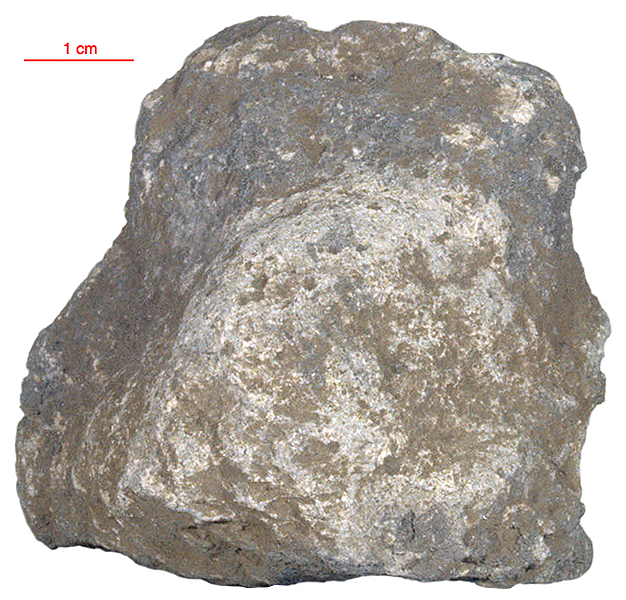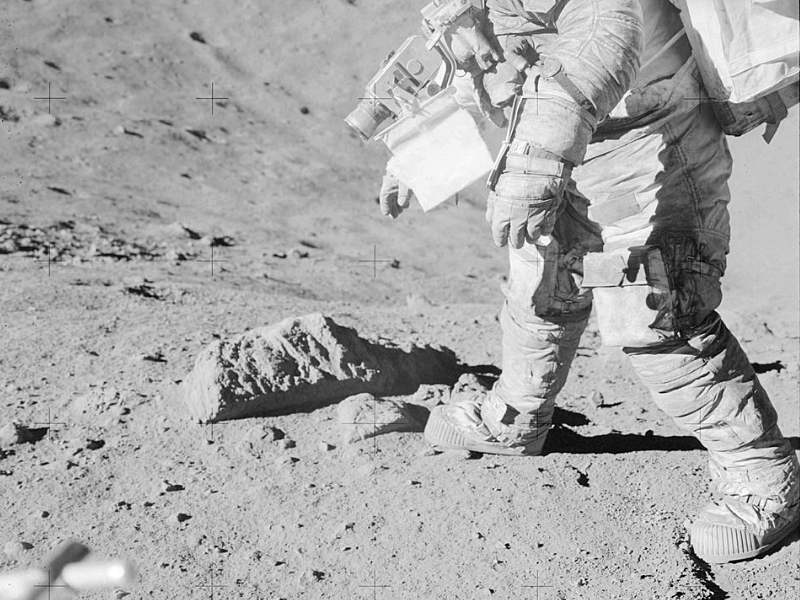
Fact sheet
15459 is a large, dense, regolith breccia which has a mineral, glass and chemical composition like that of the local soil. It contains clasts of picritic mare basalt and a wide mixture of clasts of highland rock types. Light-coloured clasts appear to range from anorthosites to leucobasalts with pale green mafic minerals. Less abundant are grey lithic clasts and mafic mineral fragments. The glasses include black, green, and orange types. The matrix is dense and glassy, and thin glass veins and selvages on clasts are common. The groundmass contains brown glass and a mixture of glass particles with a wide range of compositions. Our thin section predominantly consists of one of the light-coloured clasts (rotation 1) with marginal dark glassy breccia (rotation 2).
The sample weighed 5859 grams before analysis. One of the basalt clasts has been dated at 3.33±0.06 billion years (Ar/Ar).
Further details of this and other Apollo samples are here: http://curator.jsc.nasa.gov/lunar/
The Apollo 15 landing site was in the Apennine Highlands, and close to Hadley Rille — a long, narrow winding valley. Approximately 76 kg of lunar material, including soil, rock, core-tube and deep-core samples, were returned to Earth.
This mission was the first flight of the Lunar Roving Vehicle which allowed the astronauts to venture further from the Lunar Module than in previous missions. During three periods of extravehicular activity, or EVA, on July 31st, and August 1st and 2nd, Scott and Irwin completed a record 18 hours, 37 minutes of exploration, travelling 17.5 miles, in the first car that humans had ever driven on the Moon.
Apollo 15 was launched on 26 July 1971.







